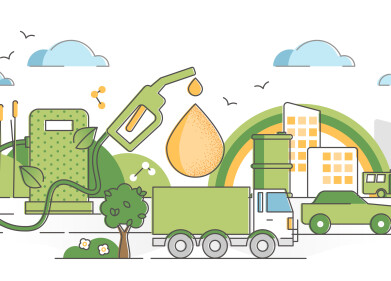Biofuel industry news
From PFAS and aluminum to many other substances, ASTM International’s committee on water (D19) is working to identify and remediate contaminants in our water
Oct 31 2023
It is difficult to overstate the significance of water. People are widely aware of its importance for human health, ecosystems, climate, transport, food, chemistry, leisure, and thousands of other functions. Even so, water brings along a complex range of issues related to safety and public health. At times, urgent matters related to testing and remediation are explored outside of the public eye.
Thankfully, there is a growing awareness of the risks posed to water by pollution and other forms of contamination. And growing media coverage of chemicals such as per- and polyfluoroalkyl substances (PFAS) means that people are learning more about the importance of testing, analysis, and other techniques.
ASTM International’s committee on water (D19) has been hard at work on issues affecting this vital building block of life. Currently, they are considering two proposed standards for assessing contaminants in water.
The first standard, the test method for bioavailable aluminum in water with suspended solids (WK74312), focuses on measuring bioavailable forms of aluminum that could be toxic to aquatic life. The second, the test method for determination of adsorbable organic fluorine in waters and waste waters by adsorption on activated carbon followed by combustion ion chromatography (WK68866), would help screen for PFAS. Together, these standards may expand our efforts to promote cleaner, safer water.
Bioavailable Aluminum
Aluminum is the most abundant metal in the earth’s crust, and it is found widely in the environment. It is also used in myriad industrial applications and consumer products – including beverage cans, airplanes, medicines, fireworks, antiperspirants, and food.
In many cases, aluminum may not be harmful. However, it can sometimes have adverse health consequences when workers or young children are exposed to significant amounts of it. Aluminum can be particularly impactful on aquatic life. In water, aluminum is often insoluble, but under certain environmental conditions, it can dissolve – becoming toxic for organisms such as fish, snails, and crustaceans.
“We find it everywhere, whether it’s cookware or aluminum siding or sheeting or utensils,” explains William Adams, Ph.D., senior scientist for Red Cap Consulting. “Aluminum is very insoluble, so you don’t see a lot of it in water. However, there are some exceptions. Some of the upstate lakes in New York, for example, and some of the soft water rivers in Georgia around Savannah. When you have situations where you have a low pH in the water body, aluminum becomes more bioavailable, and it can reach levels that could cause toxicity.”
Aluminum has been under the spotlight for several decades. However, Adams joined with several colleagues, including Allison Cardwell, Ph.D., aquatic toxicologist and independent consultant, to explore the complex issues related to the metal.
According to Adams and Cardwell, studying and testing aluminum requires a high degree of attention to details – particularly to the pH content of water and aluminum’s bioavailability – that is, its availability for biological uptake by an organism. WK74312 would make it possible to distinguish total aluminum from the aluminum that is specifically bioavailable, identifying the hazardous contents.
“In terms of toxicity, water chemistry matters, site-specific criteria matters,” Cardwell explains. “A single value is not applicable to all the water bodies in the U.S. and internationally. Developing specific criteria for different water bodies will be the most scientifically sound practice. Aluminum is a special metal because of its solubility and its ubiquity in the natural environment. It is a whole different ball game.”
Cardwell also emphasises the nuances of lab and field conditions. “A lot of research in terms of toxicity is performed in a lab with clean lab water, looking at different attributes of water chemistry,” she explains. “It’s translating, ‘How does this work in the real world where you’ve got suspended solids in water?’ That involves very complex issues with aluminum and solubility. The measurements are made in the lab, but when you get out into the field and are taking samples, how are we going to accurately measure toxicity to aquatic life?”
In a fascinating example of how ASTM members’ research can directly inform standardisation, the work of Cardwell and Adams led to several publications, a test method, and now, a proposed standard.
“We did a survey of the total bioavailable aluminum in surface waters in the US, and we selected 11 different sites,” Adams says. “We wanted to see what we would get if we use our method and how much it differs from total aluminum. It demonstrates that, depending on the amount of suspended solids you have in water, there’s a dramatic difference. If you take water from Lake Superior, for example, you’re not going to see much difference. But if you take water from the Ohio or the Mississippi River, you see a real difference, almost a factor of a hundred difference.”
Responding to PFAS
After their discovery in the 1930s, PFAS grew in popularity due to their resistance to grease, oil, water, and heat. As a result, they were used in a range of products, including stain- and water-resistant fabrics, paints, firefighting foams, cookware, and food packaging.
Since the 1970s, research has shown that PFAS pose several health concerns for workers and consumers. Studies have suggested they can cause liver, kidney, and other forms of cancer, promote central nervous system issues, and harm infants. PFAS are additionally concerning because they persist as contaminants in soil, air, and water – a function of their strong carbon-fluorine bond that makes them resistant to degradation.
“Fluorochemicals are forever chemicals, and you are hearing about them in the news all the time now,” says Jay Gandhi, Ph.D., vertical market manager for Metrohm USA. “These chemicals do not disintegrate. They’re manmade, thousands of chemicals with different names and different formulations. They end up in the environment and they are not going away.”
Gandhi explains that ASTM has already developed standards that aid in the identification of PFAS. In particular, he mentions the value of the method of a standard such as the test method for determination of per- and polyfluoroalkyl substances (PFAS) in aqueous matrices by co-solvation followed by liquid chromatography tandem mass spectrometry (LC/MS/MS) (D8421), which can be used to test water from sites such as landfills, bus-washing stations, and paper mills.
According to Gandhi, WK68866 would work in tandem with this and other methods to identify a wider range of PFAS. Developed in collaboration with the U.S. Environmental Protection Agency and using work performed in the EU, the method is currently undergoing a multi-lab validation study.
“This method allows you to look at the holistic approach of organic fluorine using the combustion technique and ion chromatography combined with looking at the fluoride contamination in the environment,” Gandhi says. “We are hoping to get about 98% to 99% of forever chemicals using this particular technique, which gives scientists and health professionals a better idea about remediation identification and other aspects regarding the environment.”
There has been rapid global progress in addressing the health impact of PFAS, particularly to respond to contamination in the environment and food. Several U.S. states and federal organizations have banned or begun phasing out PFAS-containing firefighting foams that can contaminate water, and a review is underway for a measure that would restrict their use across the EU.
Gandhi explains that as we better understand the extent of these substances in the environment, there will need to be strong consistency in the use of techniques to remediate PFAS contamination. Additionally, he says there is a need for further testing capacity, such as for PFAS in the air.
Even so, many people are hopeful that today’s efforts will provide a strong foundation for the future, as we work to better understand and be more responsive to the risks facing water around the globe
Digital Edition
PIN 25.5 Oct/Nov 2024
November 2024
Analytical Instrumentation - Picturing Viscosity – How Can a Viscometer or a Rheometer Benefit You? - Sustainable Grease Formulations: Evaluating Key Performance Parameters and Testing Method...
View all digital editions
Events
Jan 20 2025 San Diego, CA, USA
Jan 22 2025 Tokyo, Japan
Jan 25 2025 San Diego, CA, USA
SPE Hydraulic Fracturing Technology Conference and Exhibition
Feb 04 2025 The Woodlands, TX, USA
Feb 05 2025 Guangzhou, China



















